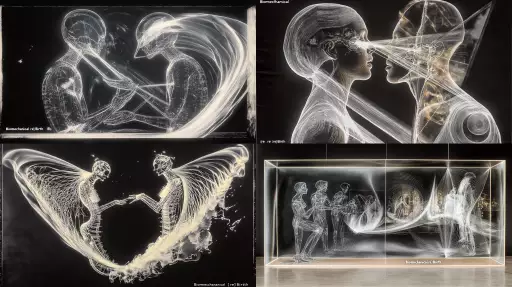Explore the Best AI Image Gallery

Blockchain in Finance: Reshaping the Creative Landscape
The finance sector has been undergoing a dramatic transformation with the advent of blockchain technology. Beyond its well-known applications in cryptocurrencies, blockchains potential extends far beyond financial transactions, revolutionizing various industries, including the creative sector.
This blog post delves into the fascinating intersection of blockchain and finance, examining how this disruptive technology is reshaping the creative landscape. Well explore its potential uses, ethical considerations, and future trends that hold immense promise for artists, designers, and innovators alike.
Potential Uses in the Creative Industry
Blockchain offers a plethora of innovative applications within the creative industry, empowering artists, musicians, writers, and designers in unprecedented ways:
- Secure Digital Asset Ownership: Blockchain enables the creation of immutable records of ownership for digital assets such as artwork, music, and writing. This eliminates the ambiguity surrounding digital copyright and empowers creators to control their intellectual property.
- Micropayments and Royalties: Smart contracts on blockchain can automate royalty payments to artists every time their work is used or sold, ensuring fair compensation for their creations.
- Decentralized Platforms for Content Sharing and Distribution: Blockchain-based platforms allow creators to directly connect with their audience, bypassing traditional intermediaries and retaining a larger share of revenue from their work.
- NFT (Non-Fungible Tokens) for Unique Creations: NFTs represent unique digital assets, verifiable on the blockchain. This opens up new possibilities for artists to sell limited-edition artworks, collectibles, and virtual experiences.
Ethical Considerations
While blockchain offers immense potential, its crucial to address the ethical considerations associated with its implementation in the creative industry:
- Accessibility and Inclusivity: Blockchain technology should be accessible to all creators, regardless of their technical expertise or resources. Ensuring equitable access is vital for fostering inclusivity.
- Data Privacy and Security: The use of blockchain requires careful consideration of data privacy and security measures to protect sensitive information belonging to artists and their audience.
- Copyright Infringement and Plagiarism: While blockchain can help prevent copyright infringement, its essential to establish clear guidelines and mechanisms for addressing potential violations within the decentralized ecosystem.
Future Trends
The intersection of blockchain and finance in the creative industry is constantly evolving. Here are some future trends to watch:
- Integration with Metaverse Platforms: Blockchain will play a key role in securing ownership and transactions within virtual worlds, enabling new forms of artistic expression and commerce.
- Decentralized Autonomous Organizations (DAOs) for Creative Collaboration: DAOs can empower artists to collaborate, share resources, and make collective decisions on projects, fostering a more democratic and transparent creative ecosystem.
- Tokenization of Intellectual Property: Blockchain will facilitate the fractional ownership and trading of intellectual property rights, enabling new investment opportunities and revenue streams for creators.
The convergence of blockchain and finance is poised to revolutionize the creative industry. By embracing these transformative technologies, artists, designers, and innovators can unlock unprecedented opportunities for artistic expression, collaboration, and financial empowerment.